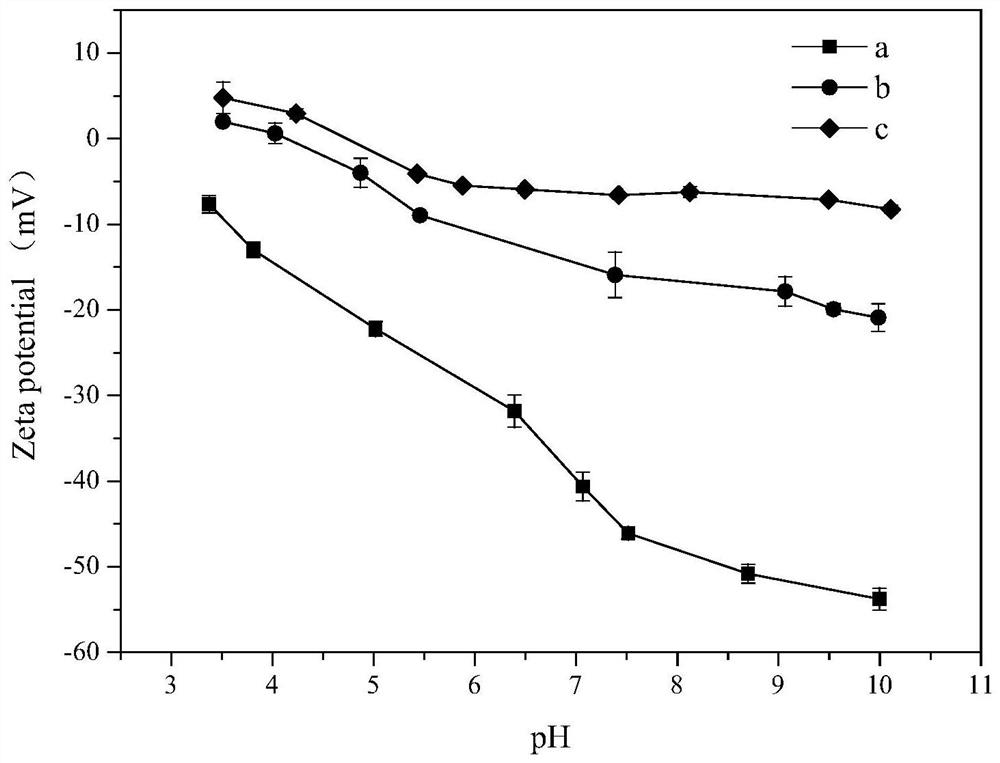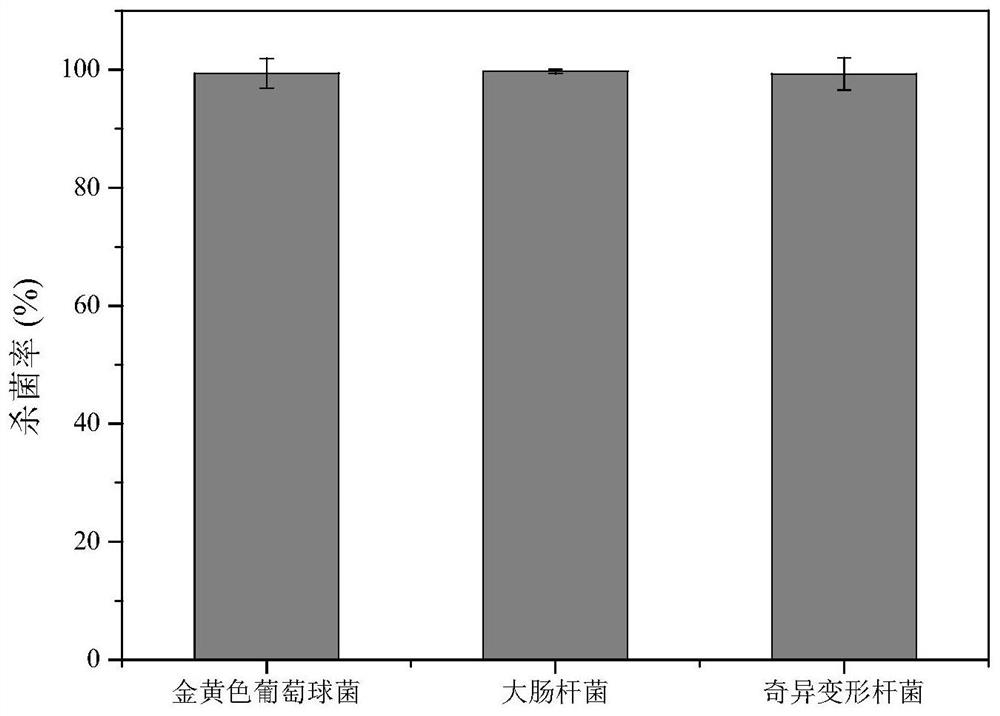Bio-friendly antibacterial coating capable of effectively fixing cationic antibacterial agent and resisting bacterial biofilm
An antibacterial coating and cation technology, applied in the field of medical materials, can solve the problems of biofilm pollution and poor biocompatibility, and achieve the effects of simple preparation method, poor biocompatibility improvement, and long-term high-efficiency effects.
- Summary
- Abstract
- Description
- Claims
- Application Information
AI Technical Summary
Problems solved by technology
Method used
Image
Examples
Embodiment 1
[0028] After mixing 10mL of 10mg / mL bovine serum albumin aqueous solution and 10mL of 0.4g / mL polylysine aqueous solution evenly, add 10mL of 14mg / mL tris (2-carboxyethyl) phosphine aqueous solution with pH of 4.5 (its pH is determined by NaOH adjustment), mixed uniformly to obtain an impregnating liquid, the concentration of bovine serum albumin in the obtained impregnating liquid was 3.33mg / mL, the concentration of polylysine was 0.13g / mL, and the concentration of three (2-carboxyethyl) phosphine It was 4.67mg / mL. Soak a silica gel sheet with a length and width of 1.8 cm in the obtained immersion solution at 30°C for 2 hours, then wash it with deionized water and dry it to obtain a silica gel modified with a phase-transition bovine serum albumin antibacterial coating immobilized with polylysine piece.
Embodiment 2
[0030]After mixing 10mL of 10mg / mL bovine serum albumin aqueous solution and 10mL of 0.4g / mL polylysine aqueous solution evenly, add 10mL of 14mg / mL tris (2-carboxyethyl) phosphine aqueous solution with pH of 4.5 (its pH is determined by NaOH adjustment), mixed uniformly to obtain an impregnating liquid, the concentration of bovine serum albumin in the obtained impregnating liquid was 3.33mg / mL, the concentration of polylysine was 0.13g / mL, and the concentration of three (2-carboxyethyl) phosphine It was 4.67mg / mL. Soak a silica gel sheet with a length and a width of 1.8 cm in the obtained immersion solution at 30°C for 2 hours, then wash it with deionized water, dry it, and soak it in the above immersion solution again, repeating 4 times to obtain a polylysine-immobilized Phase-transition bovine serum albumin antimicrobial coating modified silica gel sheets.
Embodiment 3
[0034] After mixing 10mL of 15mg / mL bovine serum albumin aqueous solution and 10mL of 0.4g / mL polylysine aqueous solution evenly, add 10mL of 10mg / mL aqueous solution of β-mercaptoethanol with a pH of 5.0 (the pH of which is adjusted by NaOH), and mix Uniformly, obtain soaking liquid, the concentration of bovine serum albumin in the gained soaking liquid is 3mg / mL, the concentration of polylysine is 0.13g / mL, the concentration of β-mercaptoethanol is 3.33mg / mL. Soak the polyurethane in the obtained impregnating solution at 30°C for 2 hours, then wash it with deionized water, dry it, soak it again in the above impregnating solution, and repeat 4 times to obtain a phase-transition bovine serum albumin antibacterial coating with polylysine fixed. Coated polyurethane.
PUM
 Login to View More
Login to View More Abstract
Description
Claims
Application Information
 Login to View More
Login to View More - R&D
- Intellectual Property
- Life Sciences
- Materials
- Tech Scout
- Unparalleled Data Quality
- Higher Quality Content
- 60% Fewer Hallucinations
Browse by: Latest US Patents, China's latest patents, Technical Efficacy Thesaurus, Application Domain, Technology Topic, Popular Technical Reports.
© 2025 PatSnap. All rights reserved.Legal|Privacy policy|Modern Slavery Act Transparency Statement|Sitemap|About US| Contact US: help@patsnap.com



